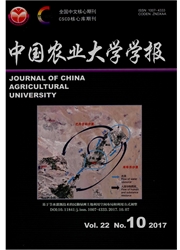

 中文摘要:
中文摘要:
以张家口市为例,根据1989、2000和2010年3期Landsat TM遥感数据,利用土地利用变化模型,景观指数以及GIS技术,系统分析了土地利用/覆被及其景观格局的变化过程和规律,探讨了退耕还林还草工程对土地利用/覆被变化及其景观格局的影响。结果表明,1989—2010年张家口市土地利用结构由以耕地和草地为主,转变为以林地和草地为主。2000年退耕还林还草工程实施以来,耕地减少幅度增加,动态度指数由-0.27%变为-0.83%,林地增加幅度加大,动态度指数由0.56%变为1.39%,草地在数量上表现为减少。退耕前,耕地主要转为草地,退耕后,耕地主要转为林地,耕地转为林地的比例由退耕前的22.50%增加为退耕后的45.46%,退耕后684.85km^2的草地转为林地。期间,研究区景观格局趋向均衡化,景观多样性降低,景观破碎化程度上升,景观形状趋于简单。这主要是由于经济建设等人类活动对土地利用和景观格局的干扰程度变大所致。
 英文摘要:
英文摘要:
Based on the technology of RS/GIS,the data of land use in 1989,2000 and 2010were obtained from Landsat TM of Zhangjiakou city.The land use change model and landscape index were used to analyze the processes of land use/land cover change and landscape pattern.The results showed that the main type of land use changed from cropland and grass into forest and grass during this period in Zhangjiakou City.The area of cropland decreased apparently,changing from-0.27%into-0.83% of the dynamic degree.Grassland decreased slightly as well.However,forest area increased obviously from 0.56% to 1.39% of the dynamic degree.It was obvious that the cropland was mainly changed into grassland before the project but changed into forest after this project.The proportion of cropland changing into forest increased from 22.50%to 45.46%.Meanwhile,684.85km^2 grassland changed into forest during this period.At the same time,the landscape pattern tended to be of equalization.The landscape fragmentation aggravated,and the shape of landscape tended to be simplicity due to human activities.
 同期刊论文项目
同期刊论文项目
 同项目期刊论文
同项目期刊论文
 Scenario simulation and landscape pattern dynamic changes of land use in the Poverty Belt around Bei
Scenario simulation and landscape pattern dynamic changes of land use in the Poverty Belt around Bei Soil erosion monitoring and its implication in a limestone land suffering from rocky desertification
Soil erosion monitoring and its implication in a limestone land suffering from rocky desertification 期刊信息
期刊信息
